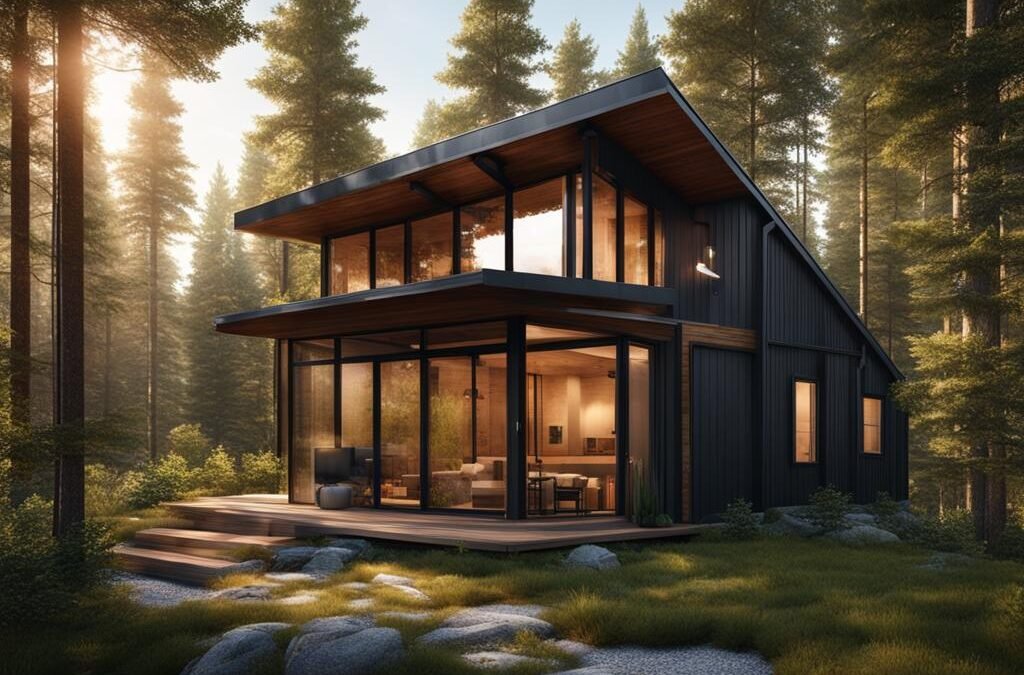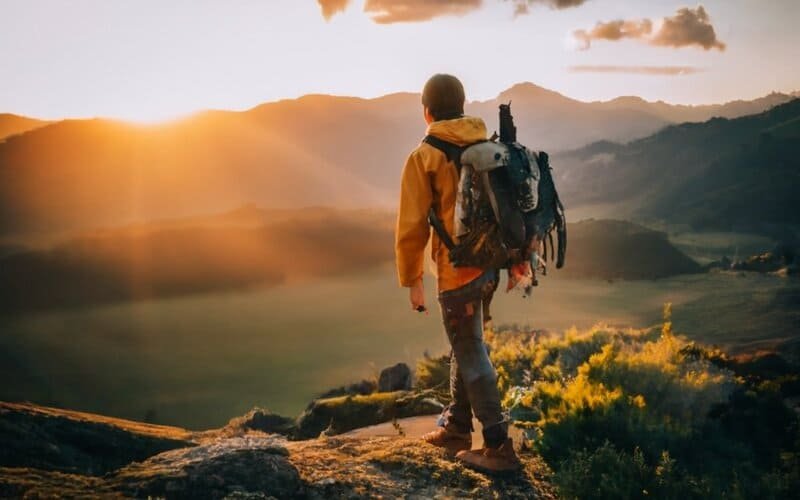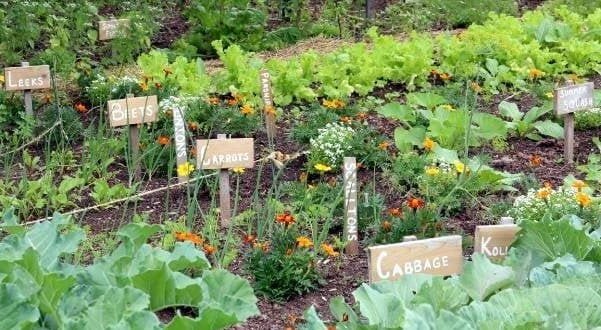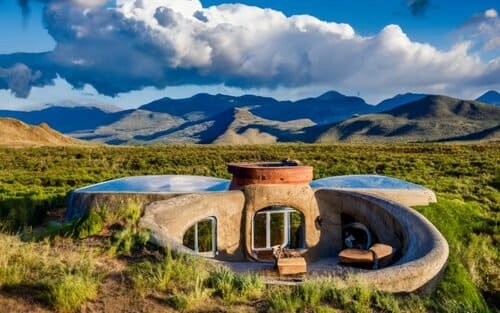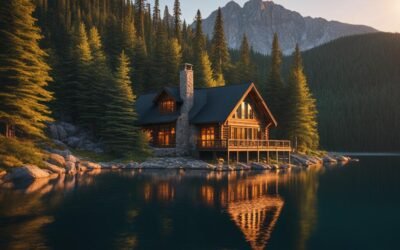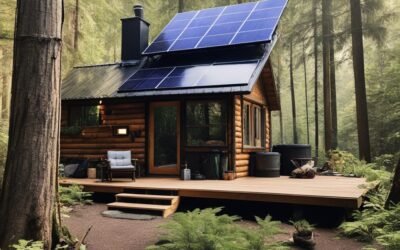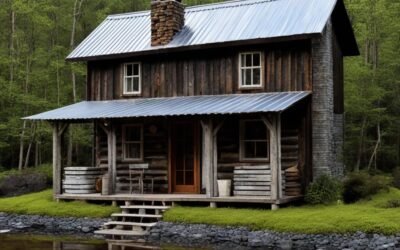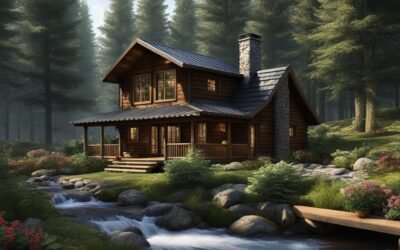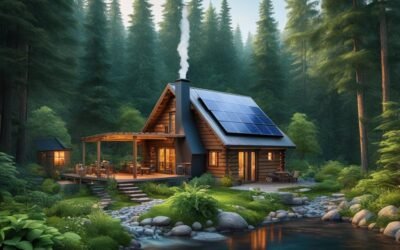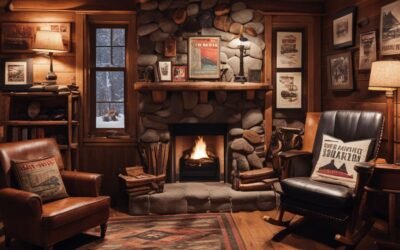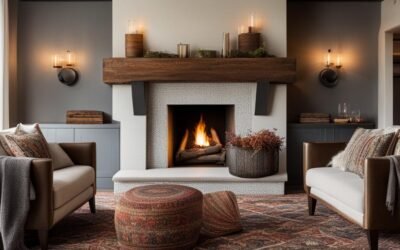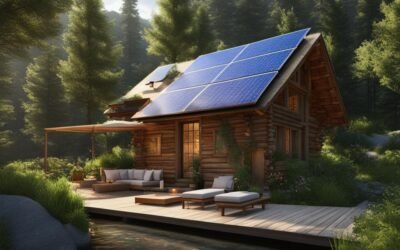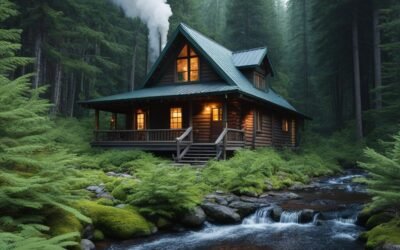Living in a modern off grid cabin allows me to embrace a sustainable and self-sufficient lifestyle while enjoying the beauty of solitude. With a focus on renewable energy and minimalist design, my off grid cabin provides a peaceful escape from the hustle and bustle of modern life. Through careful planning and a commitment to sustainability, I have created a green oasis where I can live in harmony with nature.
Key Takeaways
- Living in a modern off grid cabin combines sustainable living and solitude.
- Renewable energy and minimalist design are key elements of off grid living.
- With careful planning, one can create a self-sufficient and eco-friendly cabin.
- Off grid living provides an opportunity to live in harmony with nature.
- Embracing the off grid lifestyle promotes green living and minimalistic living.
Off Grid Living Hotspots Around the World
Off grid living is becoming increasingly popular as more people embrace a simpler, more sustainable way of life. Around the globe, there are numerous off grid hotspots where individuals can come together to live a self-sufficient and eco-friendly lifestyle. These off grid communities provide an alternative way of life, allowing residents to disconnect from traditional utilities and embrace a more harmonious relationship with nature.
If you’re considering off grid living, here are some of the top hotspots around the world:
The Appalachian Region, United States
The Appalachian region, stretching across multiple states in the eastern United States, offers a diverse range of off grid living opportunities. From the lush forests of North Carolina to the picturesque mountains of West Virginia, this region provides a scenic backdrop for those seeking a self-sufficient lifestyle. The Appalachian Trail, a famous long-distance hiking trail, runs through this area, allowing residents to fully immerse themselves in nature and enjoy the tranquility of off grid living.
The Pacific Northwest, United States
Known for its stunning natural beauty and progressive mindset, the Pacific Northwest is a popular destination for off grid enthusiasts. States like Oregon and Washington offer abundant natural resources and a thriving off grid community. From sustainable farming practices to alternative energy solutions, the Pacific Northwest embraces a holistic approach to sustainable living.
British Columbia and Ontario, Canada
Canada is home to several off grid communities, particularly in British Columbia and Ontario. British Columbia’s vast wilderness and abundant natural resources make it an ideal location for those seeking a self-sufficient lifestyle. Ontario, on the other hand, offers a thriving off grid community with a focus on renewable energy and sustainable living practices.
Costa Rica and Belize, Central America
For those interested in off grid living in Central America, Costa Rica and Belize are both attractive options. Costa Rica is known for its commitment to environmental conservation and sustainable development. With its tropical climate and lush landscapes, it offers ample opportunities for off grid living. Similarly, Belize provides a peaceful and laid-back environment, making it an ideal location for those seeking an alternative way of life.
These off grid living hotspots offer diverse environments and resources for individuals seeking a self-sufficient and environmentally conscious lifestyle. Whether you’re drawn to the mountains of the United States, the natural beauty of Canada, or the tropical landscapes of Central America, there is an off grid community out there that can help you embrace a more sustainable and fulfilling way of life.
Stay tuned for the next section, where we’ll explore the step-by-step process of building an off-grid cabin.
Steps/Process of Building an Off-Grid Cabin
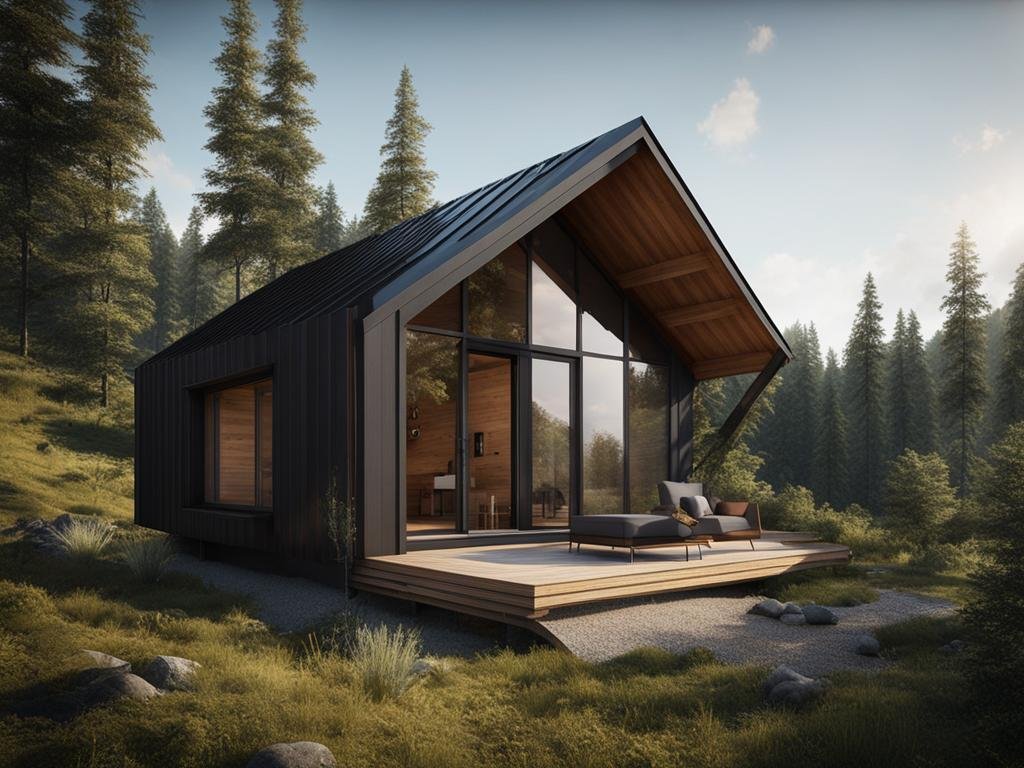 Building an off-grid cabin involves several important steps. From selecting the perfect land to implementing sustainable design and managing off-grid utilities, each stage requires careful consideration. Let’s explore the step-by-step process of creating your own off-grid retreat.
Building an off-grid cabin involves several important steps. From selecting the perfect land to implementing sustainable design and managing off-grid utilities, each stage requires careful consideration. Let’s explore the step-by-step process of creating your own off-grid retreat.
1. Land Selection
Start by scouting for land that offers access to natural resources and essential services. Consider factors such as sunlight exposure, wind patterns, and proximity to water sources. The right location will ensure optimal conditions for sustainable living.
2. Energy Efficiency and Sustainable Design
Design your off-grid cabin with energy efficiency in mind. Use sustainable materials and prioritize natural insulation. Thoughtful window placement can maximize natural light and minimize heating and cooling needs. Choose between traditional construction methods or modern prefab alternatives.
3. Off Grid Utilities
Set up your off-grid utilities to achieve self-sufficiency. Install a solar power system to generate renewable energy and reduce reliance on the grid. Implement rainwater collection systems for a sustainable water source. Composting toilets help manage waste effectively while minimizing the environmental impact.
4. Water and Waste Management
Ensure efficient water and waste management in your off-grid cabin. Consider implementing a greywater system to reuse wastewater for irrigation. Utilize composting and recycling methods to minimize waste and conserve resources. Prioritize eco-friendly practices for a sustainable living experience.
5. Cost Considerations
While building an off-grid cabin, cost considerations are crucial. Plan your budget carefully, taking into account both the initial construction costs and ongoing expenses. Embrace DIY techniques to save money and be resourceful in sourcing materials. Prioritize long-term savings by investing in durable and energy-efficient solutions.
6. Visually Appealing Design
Incorporate your personal style into the design of your off-grid cabin. Create a space that reflects your aesthetic preferences while remaining environmentally conscious. Blend natural and sustainable elements into the interior and exterior design to harmonize with the surrounding landscape.
Building an off-grid cabin encompasses more than just constructing a physical structure. It is a journey towards sustainable living, self-sufficiency, and a deep connection with nature. Each step plays a vital role in creating a holistic and environmentally conscious retreat, enabling you to embrace the off-grid lifestyle fully.
| Step | Description |
|---|---|
| 1 | Land Selection |
| 2 | Energy Efficiency and Sustainable Design |
| 3 | Off Grid Utilities |
| 4 | Water and Waste Management |
| 5 | Cost Considerations |
| 6 | Visually Appealing Design |
Building an off-grid cabin involves several important steps, from land selection to sustainable design and off-grid utilities. These steps ensure a harmonious blend of eco-friendly practices, energy efficiency, and cost considerations. By following this process, you can create a self-sufficient and environmentally conscious haven that truly reflects your values and lifestyle.
Personal Benefits of Off-Grid Living
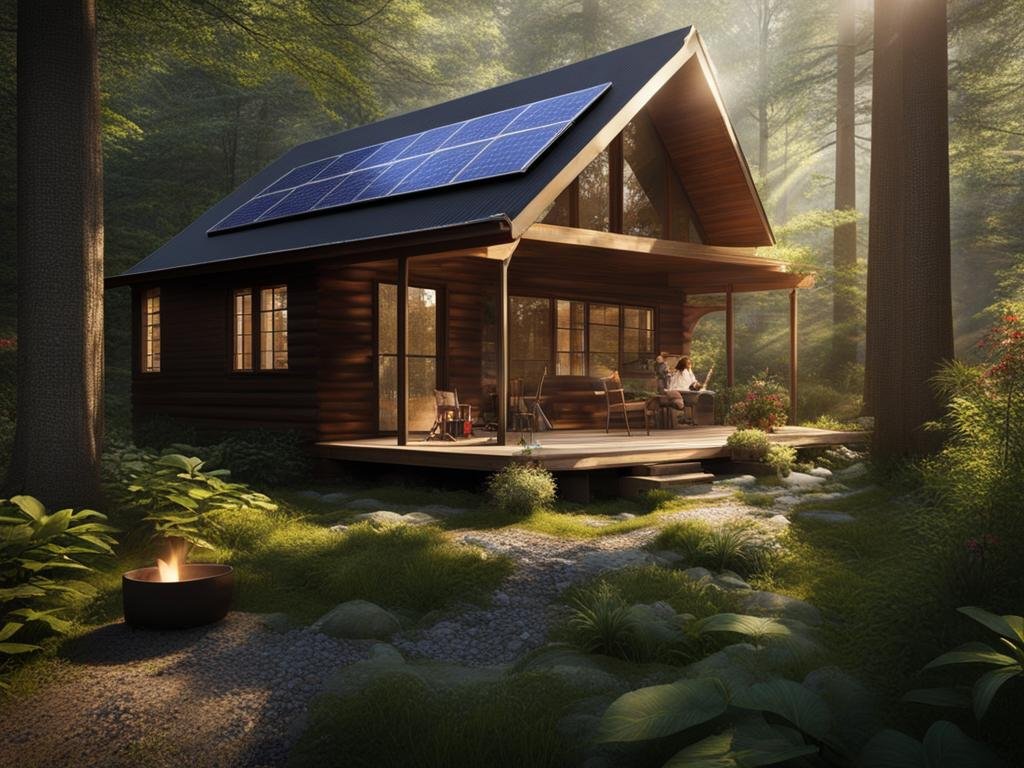 Living off the grid offers numerous personal benefits that enhance both our lifestyle and well-being. Through the choices we make to embrace self-sufficiency and simplicity, we can experience a deeper connection with nature, achieve personal growth, and enjoy financial savings. Here’s a closer look at how off-grid living can positively impact our lives:
Living off the grid offers numerous personal benefits that enhance both our lifestyle and well-being. Through the choices we make to embrace self-sufficiency and simplicity, we can experience a deeper connection with nature, achieve personal growth, and enjoy financial savings. Here’s a closer look at how off-grid living can positively impact our lives:
1. Self-Sufficiency:
Off-grid living empowers us to become more self-sufficient, relying on our own skills and resources to meet our daily needs. By disconnecting from traditional utilities, we become adept at generating our own power, collecting rainwater, and managing waste sustainably. This sense of self-reliance fosters independence, resilience, and a greater appreciation for the resources that nature provides.
2. Connection with Nature:
Living off the grid allows us to immerse ourselves in the beauty of nature. Whether it’s waking up to the sound of birds chirping, enjoying breathtaking sunsets, or being surrounded by lush greenery, the connection with nature becomes an integral part of our daily lives. This connection brings tranquility, peace, and rejuvenation, fostering a deep appreciation for the natural world and our place within it.
3. Simplicity:
Off-grid living embraces simplicity, offering an escape from the fast-paced, consumer-driven lifestyle that often dominates modern society. By adopting a minimalist approach, we prioritize what truly matters and eliminate unnecessary material possessions, reducing clutter and stress. This simplicity allows us to focus on experiences, relationships, and personal growth.
4. Financial Savings:
Living off the grid can lead to significant financial savings in the long run. By harnessing renewable energy sources such as solar power and wind turbines, we reduce our reliance on costly utilities. Additionally, practicing water conservation, composting, and growing our own food can further reduce expenses. These financial savings enable us to allocate resources towards other meaningful endeavors.
Ultimately, off-grid living is a catalyst for personal growth. It challenges us to adapt to a simpler way of life, encourages us to explore our own capabilities, and allows us to live authentically in alignment with our values. It’s a transformative journey that prioritizes connection with nature, self-sufficiency, and personal fulfillment.
“I went off the grid and discovered the beauty of a simpler life. I found solace in nature, embraced self-sufficiency, and experienced personal growth like never before. It’s a way of living that truly sets you free.” – Emma Thompson
Best Documentaries and Movies About Living Off the Grid
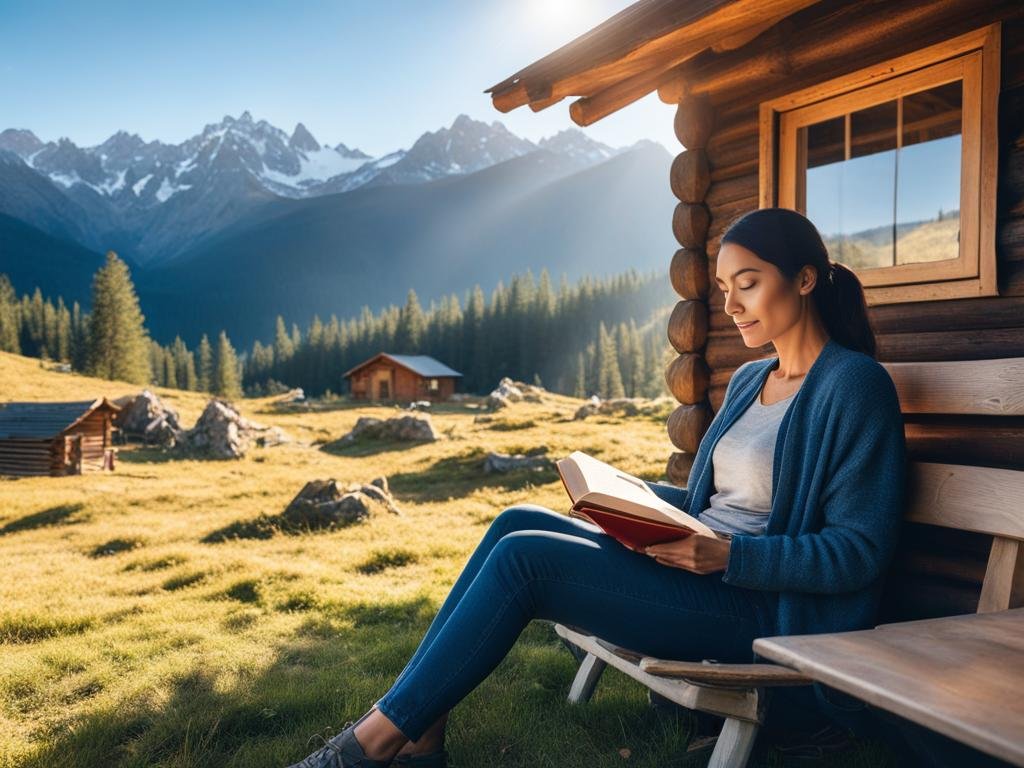 If you’re looking for a deeper understanding of the off-grid lifestyle, these captivating documentaries and movies provide an insightful glimpse into the world of living off the grid. From inspiring stories to engaging visuals, these films highlight the motivations and experiences of individuals and families who have embraced alternative living.
If you’re looking for a deeper understanding of the off-grid lifestyle, these captivating documentaries and movies provide an insightful glimpse into the world of living off the grid. From inspiring stories to engaging visuals, these films highlight the motivations and experiences of individuals and families who have embraced alternative living.
“Life Off Grid”
This thought-provoking documentary explores the lives of people who have chosen to disconnect from traditional utilities and live off the grid. It delves into their motivations, challenges, and the innovative solutions they’ve adopted to achieve self-sufficiency.
“Living The Change”
Discover the transformative power of sustainable living through this inspiring documentary. The film showcases individuals from different walks of life who have embraced alternative lifestyles and are making positive contributions to their communities and the environment.
“Les Stroud Off The Grid”
Follow survival expert Les Stroud as he documents his personal journey to build an off-grid homestead. This film combines captivating wilderness footage with practical tips and insights into the joys and challenges of off-grid living.
“Off the Grid (2012)”
Experience the off-grid lifestyle through the eyes of Alex and Nicki’s family as they leave behind the comforts of modern society to build a sustainable home in the wilds of Oregon. Witness their journey as they navigate the complexities of renewable energy, water management, and the pursuit of a self-sufficient way of life.
“All The Time in the World”
This intimate documentary follows filmmaker Suzanne Crocker and her family as they spend nine months living off the grid in the remote wilderness of Canada’s Yukon territory. The film captures their transformative experiences as they reconnect with nature and each other.
These documentaries offer valuable insights into the motivations, experiences, and challenges associated with off-grid living. By exploring the various aspects of sustainable living covered in these films, viewers can gain a comprehensive understanding of the alternative lifestyle and its benefits.
Conclusion
Living in a modern off grid cabin provides a unique and fulfilling lifestyle that combines sustainable living practices with the beauty of solitude. With careful planning and a commitment to self-sufficiency, individuals can create their own oases away from the constraints of modern society.
Off grid living offers personal benefits such as greater self-sufficiency and a deeper connection with nature. By embracing a minimalist and eco-friendly lifestyle, individuals can reduce their environmental impact and live in harmony with the natural world.
Not only does off grid living provide a sense of freedom and independence, but it also offers opportunities for personal growth and financial savings. By relying on renewable energy sources, individuals can reduce their utility bills and take control of their energy consumption.
Through documentaries and movies, the world of living off the grid can be explored, offering valuable insights and inspiration for those considering this alternative way of life. These films showcase the motivations, experiences, and practical aspects of sustainable living, providing a comprehensive understanding for individuals looking to embark on this journey.
FAQ
What is off grid living?
Off grid living refers to a lifestyle that is independent of traditional utilities such as electricity, water, and sewer systems. It involves relying on renewable energy sources, such as solar or wind power, and being self-sufficient in terms of water supply and waste management.
Where are the popular off grid living destinations?
Some popular off grid living destinations include the Appalachian region in the United States, the Pacific Northwest, the Southwest, British Columbia and Ontario in Canada, and Central America, particularly Costa Rica and Belize.
What are the important steps in building an off-grid cabin?
The steps in building an off-grid cabin include selecting the right land, designing for energy efficiency and sustainable materials, considering window placement and insulation, choosing between traditional or modern construction methods, and installing solar power systems, rainwater collection systems, and composting toilets.
What are the personal benefits of off-grid living?
Off-grid living offers personal benefits such as greater self-sufficiency, a deeper connection with nature, personal growth, and potential financial savings through reduced energy consumption and independence from traditional utilities.
Can you recommend any documentaries or movies about living off the grid?
Some recommended documentaries and movies about living off the grid include “Life Off Grid,” “Living The Change,” “Les Stroud Off The Grid,” “Off the Grid (2012),” and “All The Time in the World.” These films explore the motivations and experiences of individuals and families who have chosen to live off the grid, offering insights into sustainable living practices.

